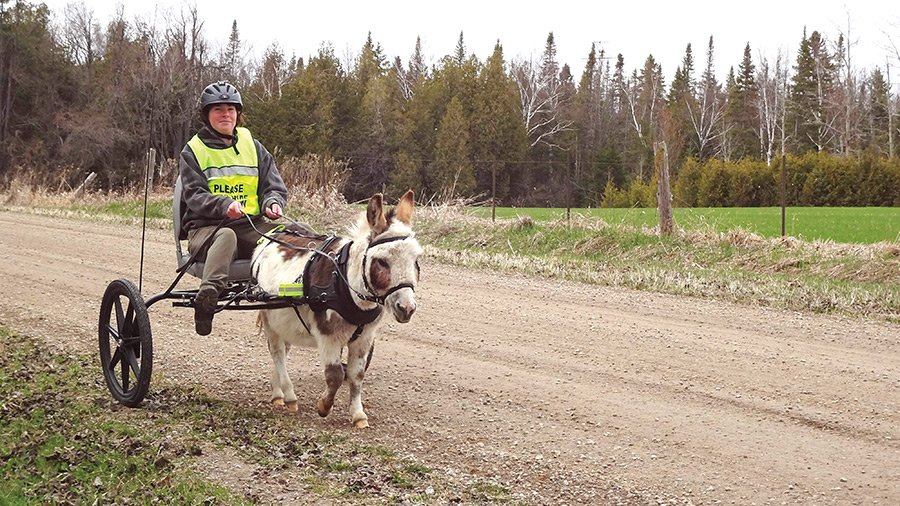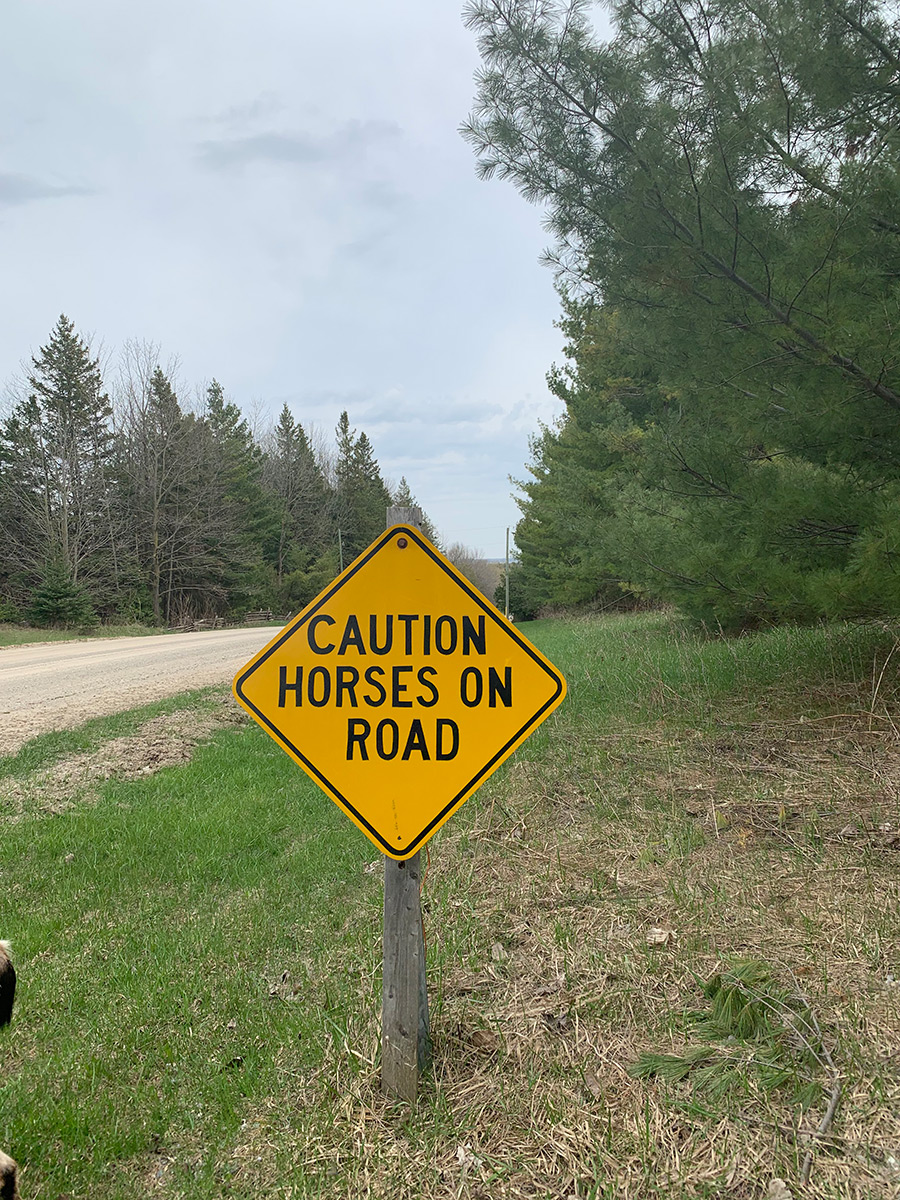The nice weather is finally here and with it comes that urge to get out on your horse.
With increased development in rural areas, it is important for horse owners to be prepared.
Some drivers and cyclists may never have encountered a horse and rider or buggy and may not know how to approach or pass a horse safely. Vehicles, cyclists and horse and riders are all entitled under the law to share the road and are responsible to take precautions when passing or meeting.
While people really like seeing horses out and about, safety is paramount and needs to be supported by public education and signage on rural roadways and trails.
Guidelines and Best Practices
Horse Owners/Riders/Carriage Drivers:
• The Ontario Traffic Act states that every person under the age of 18 years must wear a helmet and proper footwear to be permitted to ride on a public highway.
• For those under the age of 16, parents or guardians are responsible for permitting that child to ride or drive a horse on a highway.
• Horse and riders have the same rights and responsibilities as motorized vehicles and cyclists; a former law giving horses ‘right of way’ has been replaced.
• Seek proper training for yourself and your horse; never attempt to take a spooky or reactive horse on the road.
• Wear bright reflective clothing and never ride or drive your horse on the road in low light (dusk or dawn).
• Before going out, check that all tack and gear is in good condition.
• Take your cell phone and carry ID, health card and emergency contact information on you at all times (in the event of an accident).
• Ride single file, on the right side of the road, going with the flow of traffic. Keep one horse-length apart.
• Cross over an intersecting roadway in a group (so that the horses stay together) and cross only where you have a clear line of sight in both directions.
• If a situation seems unsafe, dismount and lead your horse.
• Walk, never run, from a dog or other frightening situation. Running may add to your horses’ excitement and up their adrenalin level.
• Riders need to be aware that motorist and cyclists may not be familiar with horses or understand that horses can be easily startled; so be prepared for every eventuality and have an escape plan.

Taylor Valentine driving her miniature Mediterranean donkey jack, Chip.
Submitted photo
Motorists:
• Slow down and pass on the left; excessive speed and flying gravel can endanger both the horse and rider.
• Leave ample room when passing. Horses can be unpredictable, err on the side of caution.
• If the rider is having trouble controlling their horse, stop your vehicle in a safe location until the rider has resumed control.
• Never honk, wave or make excessive noise that might scare the horse.
Cyclists:
• Bicycles are quiet; avoid riding up on a horse and rider unannounced and spooking the horse.
• Ring your bell (softly) or speak so that the horse and rider know you are approaching.
• It is less frightening to the horse if you sit up, instead of hunching over the handles of your bike.
• If the horse is acting up, hold back and wait until the rider has the horse under control before attempting to pass.
Public trails: shared use and etiquette
When riding, meeting or passing a horse on public trails, use the three C’s: courtesy, communication and common sense.
• Make your presence known from a distance by calmly addressing the rider.
• Pass slowly on the left after the rider has acknowledged your presence.
• If you are motorized, we request that you stop and shut off your engine as a courtesy. Greet the rider and wait until horse and rider have moved off a safe distance before continuing.
• If you are unsure of what to do in any situation concerning a horse, ask the rider before taking any action.
• Bike riders yield to both hikers and horseback riders; hikers yield to horseback riders.
• Walk, ride or cycle in single file in the middle of the trail, even when wet or muddy.
• When meeting other trail traffic, stay to the right and pass on the left.
• Riders, you are sharing the trail with hikers, cyclists and dogs; be prepared to control your horse when you encounter oncoming or passing trail traffic.
• When your horse poops, dismount and pick it up or kick it off the trail. If you notice horse manure while riding along the trail, be a good neighbour and kick it off.
• Horses sometimes “go” while on the run and riders may not notice. Please do not take offence; simply kick the manure off to the side, it is good compost.
• If you are hesitant to get your shoes dirty—grab a stick or place a plastic bag over your shoe.
Keep dogs leashed when horses are present; a horse might kick out and injure your dog.
Liability: If you are in an accident you can be liable, so take the right precautions, respect the law, obey signage and prepare your horse properly.
Third party liability insurance for you and your horse is available through the Canadian Recreational Horse and Rider Association (CRHRA), Ontario Equestrian (OE), and other groups.
Patrick Connor, executive director at Ontario Trails Council, suggests that all trail users should practice ‘expect and respect’ and the faster means of transportation should always yield or give way to the slower vehicle (or horse).
Connor and his group have conducted in depth studies for the Guelph to Goderich trail system and most recently for the Ottawa Valley Rail Trail, and they maintain that an active trail system is good for the local economy. Connor says municipalities should increase education and awareness and install signs announcing horse traffic at trail entrances and where public roads intersect trails.
(Reference and resources: Canadian Horse and Rider Association, Ontario Equestrian, Ontario Trails andTown of Erin: Road Safety Handbook for Equestrians)




